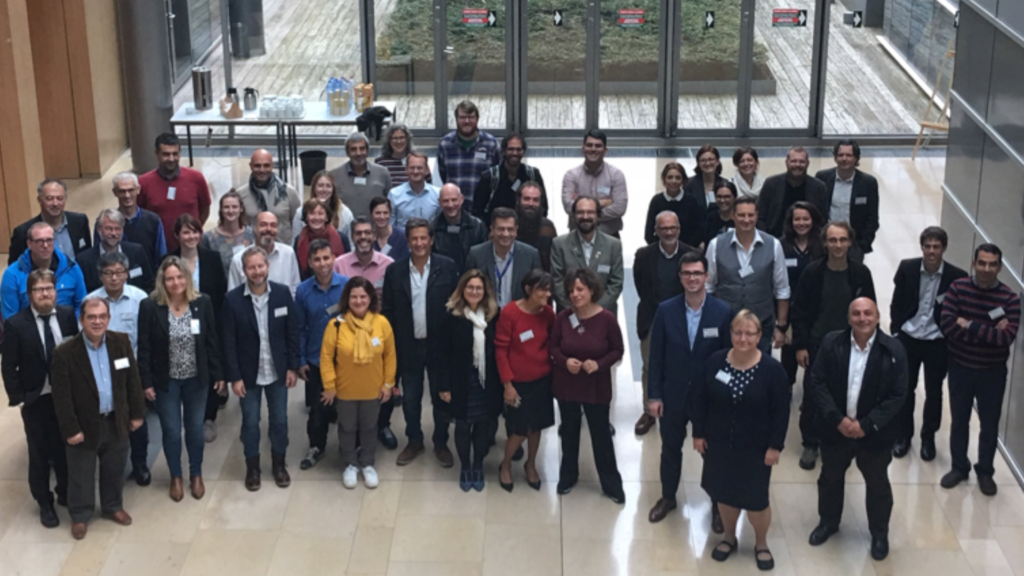
A few words from the coordinator of GEOEssential
Prof. Anthony Lehmann was proud to present to the rest of the ERA-PLANET consortium and to its project officer, Jean Dussart, the numerous progresses made in all the work packages of GEOEssential at the annual meeting that took place 10-11 October 2019, Brussels, Belgium. Even though GEOEssential is a very interdisciplinary project, the partners have adopted the proposed framework and are advancing according to the work plan. The GEOEssential consortium is particularly satisfied with the following achievements.
Main achievements
- The main objective of GEOEssential is to demonstrate how the concept of Essential Variables can be implemented in the GEO platform though workflows addressing different policy needs. The Virtual Laboratory (VLab) solution brought by CNR not only addresses the needs of GEOEssential, but it is being extended to the other three ERA-PLANET projects (SMURBS, IGOSP and iCUBE). The main workflows under development are presented in the following sections of this newsletter.

- Knowledge platform built with specific workflows linking EO to policy indicators through EVsThe workflows need to be accompanied by a Knowledge Base as part of the VLab to create the connections between the different classes of concepts such as Data sources, Essential Variables, Processes, Indicators, Policy targets. We realized through GEOEssential that the best way to fully connect these concepts are through specific workflows. These connections can be visualized by the graphical interface developed by CREAF, which is accessible at www.eneon.org/graph-vis/index.htm.
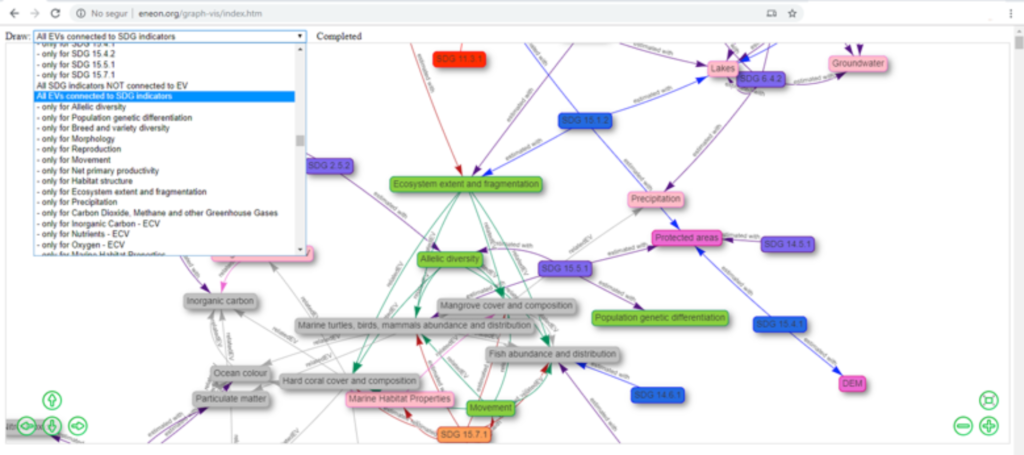
- At UNIGE, we are taking advantage of the GEOEssential project to test the Data Cube technology in Switzerland (www.swissdatacube.org) and now anywhere on Earth with a specific interface develop at UNEP/GRID to build data cube on demand.
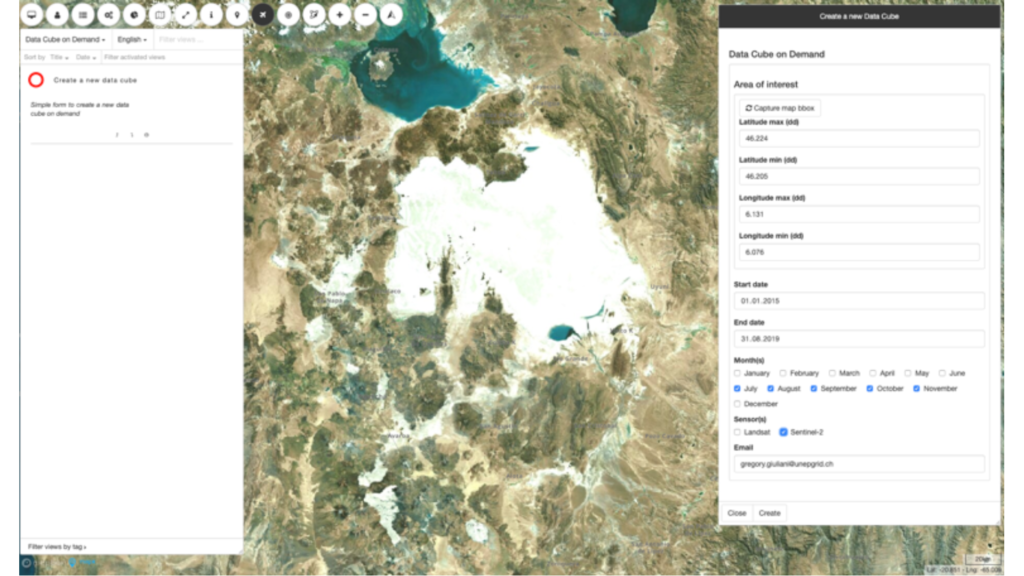
- Launch of the Global Radiance Light Trends web application (lighttrends.lightpollutionmap.info) is another pride of the project. With this interface, you can examine changes in nighttime light emissions (nearly) worldwide, from 1992 up until last month. The emissions data come from two satellite sensors. From 1992 to 2013, data comes from the Operational Linescan System of the Defense Meteorological Satellite Program (DMSP) satellites. From 2012 to the present, data comes from the Day/Night Band of the Visible Infrared Imaging Radiometer Suite instrument (VIIRS DNB). The instruments have a number of important differences, and for that reason it is not possible to have a single record running from 1992 to today.
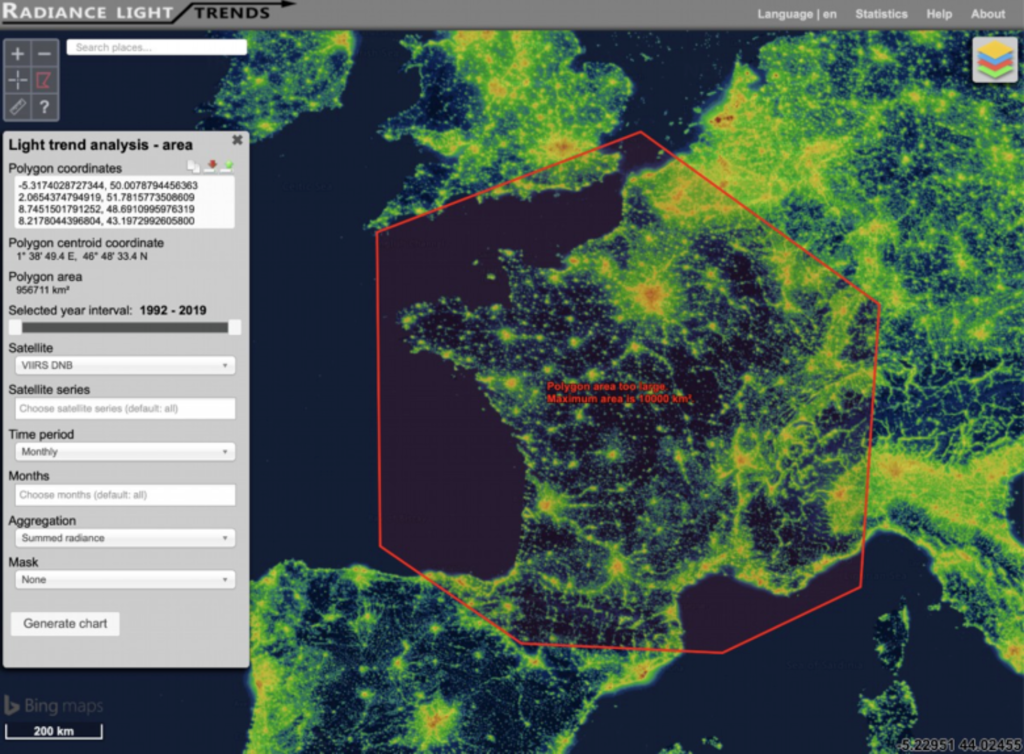
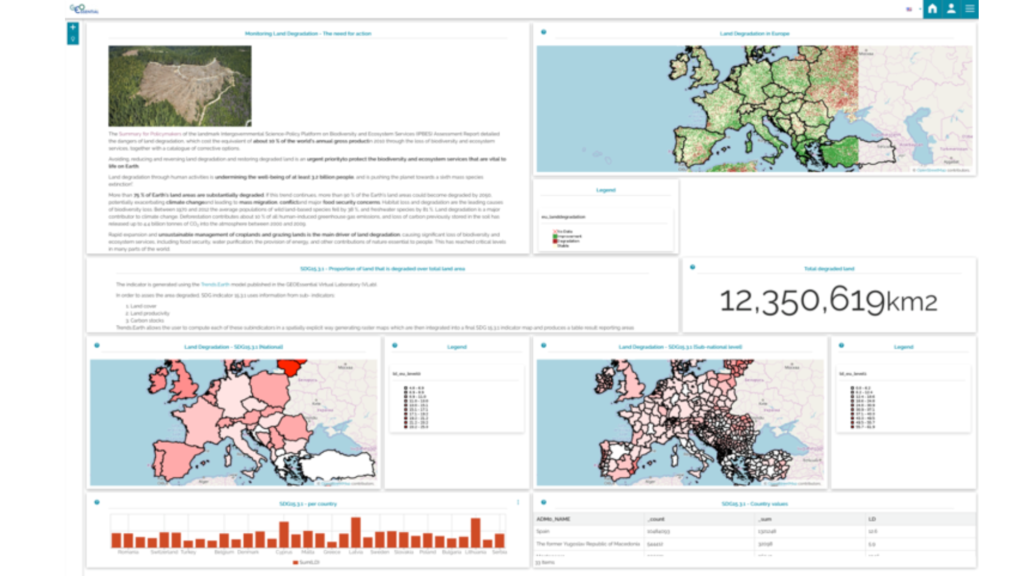
- Another main objective of GEOEssential is to show how the results of specific workflows can be shared and visualized on a dedicated GEOEssential Dashboard (geoessential.unepgrid.ch/mapstore/#/dashboard/4). An open source solution was selected with the MapStore package, which is developed by the same team as GEOServer and GEONetwork and therefore guarantees a full compatibility in this series of SDI products.
- The objective of the Special Issue on EVs that will be finalized in early 2020, is to introduce and discuss how GEO and GEOSS could create and share more knowledge possibly using less data through a coordinated use of Essential Variables. The editorial paper (Lehmann et al. 2019a) situates the papers of the special issue within a new comprehensive typology of EV classes describing socio-ecological systems on the basis of GEO Societal Benefit Areas (SBAs). Masò et al. (2019) introduce how EVs can link Earth Observations Observatory with policy indicators and monitoring in the context the SDGs (ESDGV). Miranda Espinosa, Giuliani, and Ray (2019) review the current status of Essential Climate Variables (ECVs) and their accessibility. Ranchin et al. (2019) show how Essential sustainable Energy Variables (EEVs) are currently being developed. Nativi et al. (2019) explore how EVs can be used for knowledge generation. Plag and Jules-Plag (2019) are advocating for a goal-based approach for establishing EVs for the implementation of the SDG agenda (ESDGV). The interest of EVs in transdisciplinary approached such as the food-water-energy nexus is tackled in McCallum et al. (2019). EBVs for ecosystem modelling is at the heart of Dantas de Paula et al. (2019). The interest of developing air quality EVs in cities is demonstrated in the city of Kiev in Ukraine (EUV) (Koloti et al. 2019). Ukraine is also the location of case study for monitoring SDG indicators (ESDGV) (Lavreniuk et al. 2019). The last paper (Lehmann et al. 2019b) discusses how the EV concept can be generalized and how it can be used with different tools provided by the GEOSS platform to create cross-thematic workflows to evaluate, predict and monitor based on indicators our progresses towards policy targets such as the Sustainable Development Goals (ESDGV).
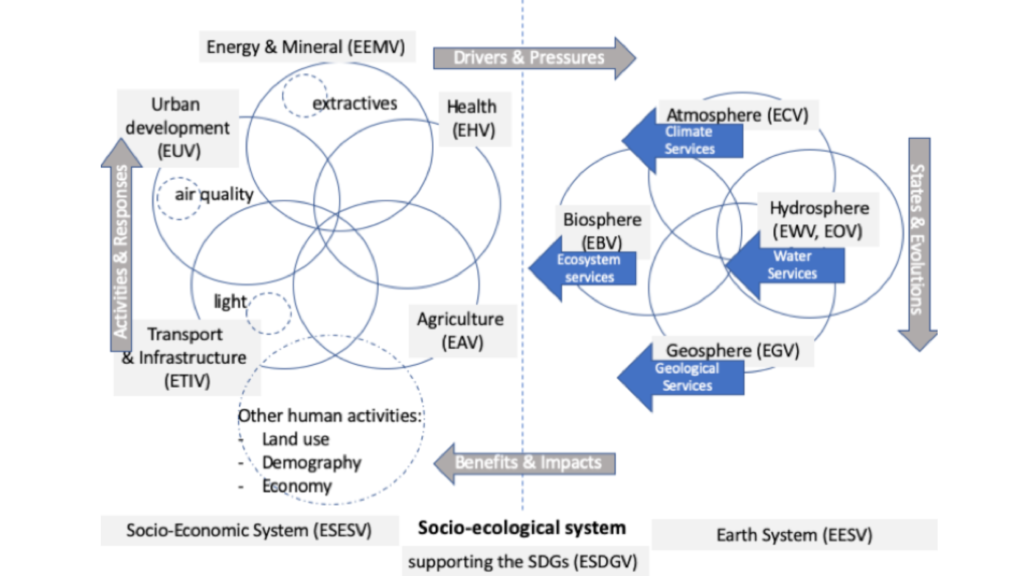
- Finally, we are pleased to be able to start of a new GEO community of activity on EVs with the following objectives:
- Meta-coordination in the elaboration of EVs among SBAs. Reduce the overlapping between existing and future EVs. Shared knowledge and processes for EVs definition.
- Gap analysis of EVs and observation networks.
- Convergence of the definition of EVs across SBAs.
- Expanding EVs to all relevant communities in Earth Observation.
- Relationship between EVs and SDGs. SDGs indicators retrieval based on the use of EVs as a proxy.
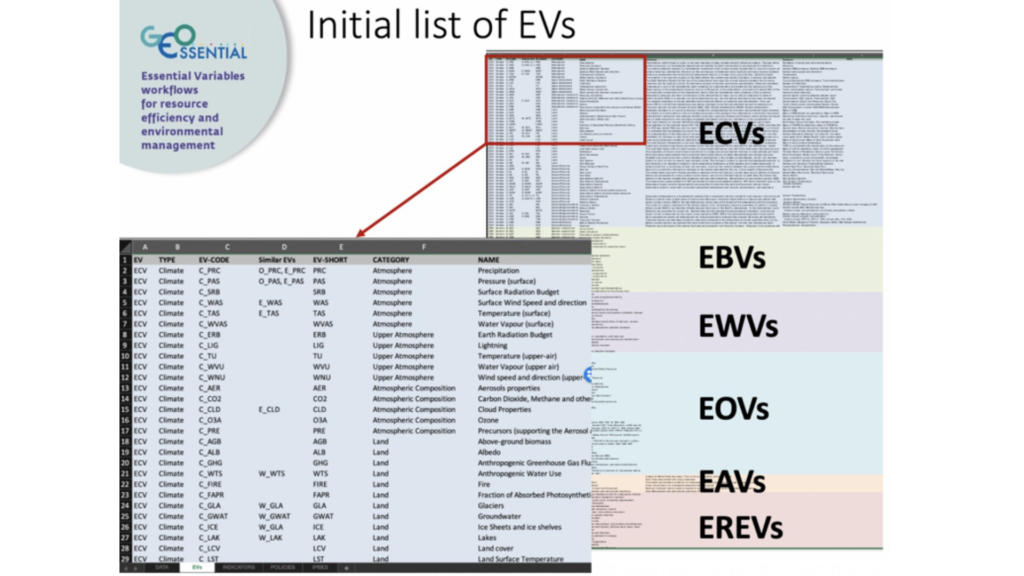
Main links with SDGs
GEOEssential is using the SDGs indicators as its main demonstration policy context. Of course, these demonstrations are transferable to other policy objectives in specific domains at various scales as shown in the central figure of GEOEssential.
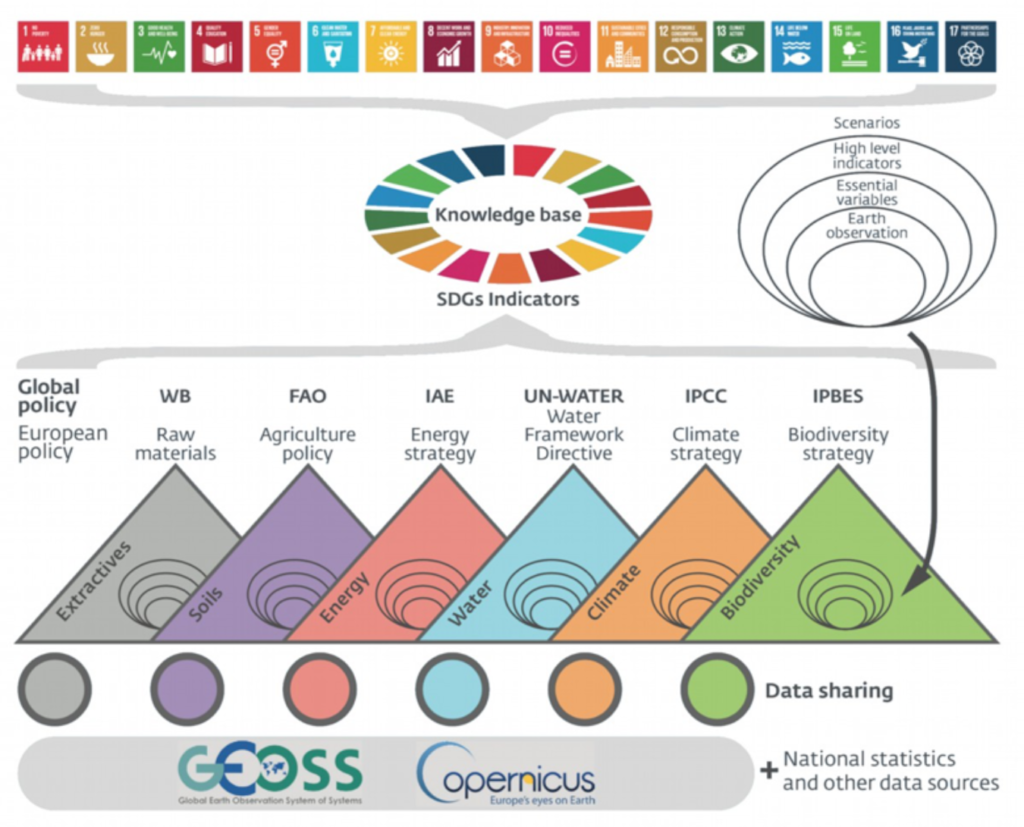
- For instance, Goal 2 on Zero Hunger is explored by the SRI partner in the development of an original approach in Ukraine to monitor agricultural activities.
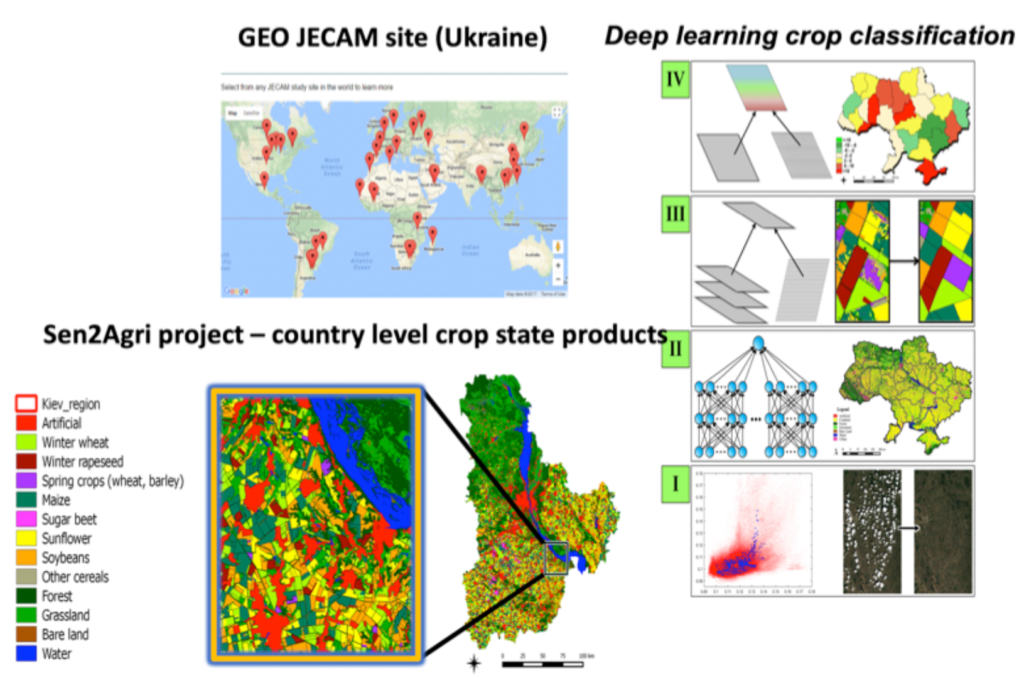
- Goals 2 on agriculture and 6 on Clean Water and Sanitation is addressed by the improvement of a pan-European dynamic model coupling climate and water at various scales by the FZJ partner.
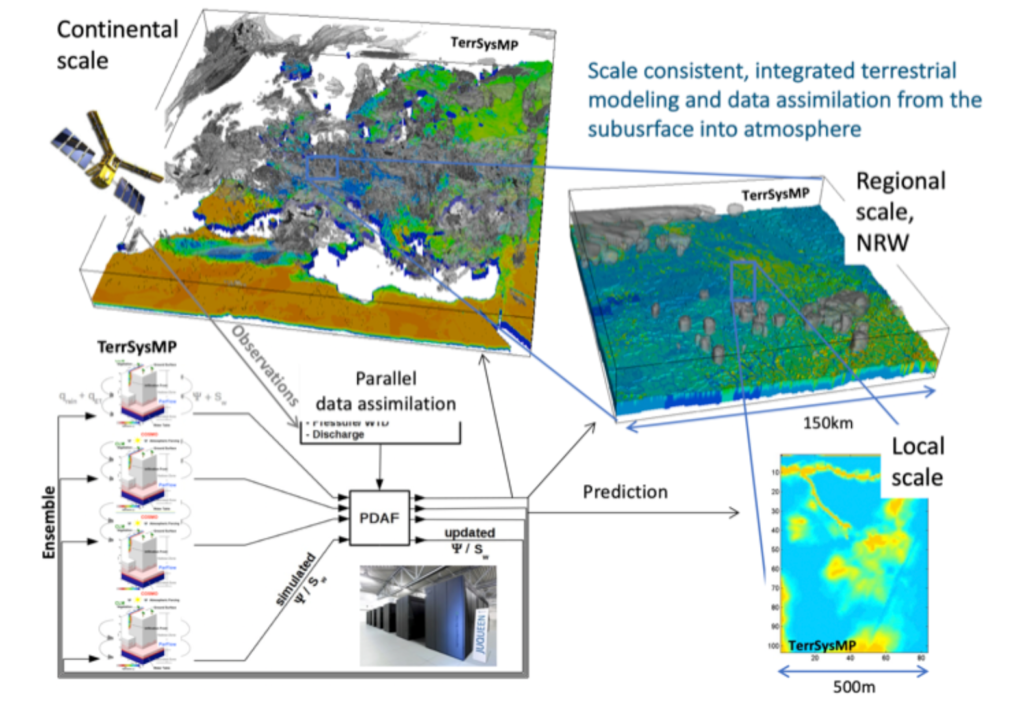
- Goal 12 on Responsible Consumption and Production is explored with the improvement and consolidation of the UNEP MapX platform with a focus on Extractives. The platform is also now used by UN Environment as a baseline platform to support countries reporting to the Minamata Convention on Mercury and on the Convention on Biological Diversity.
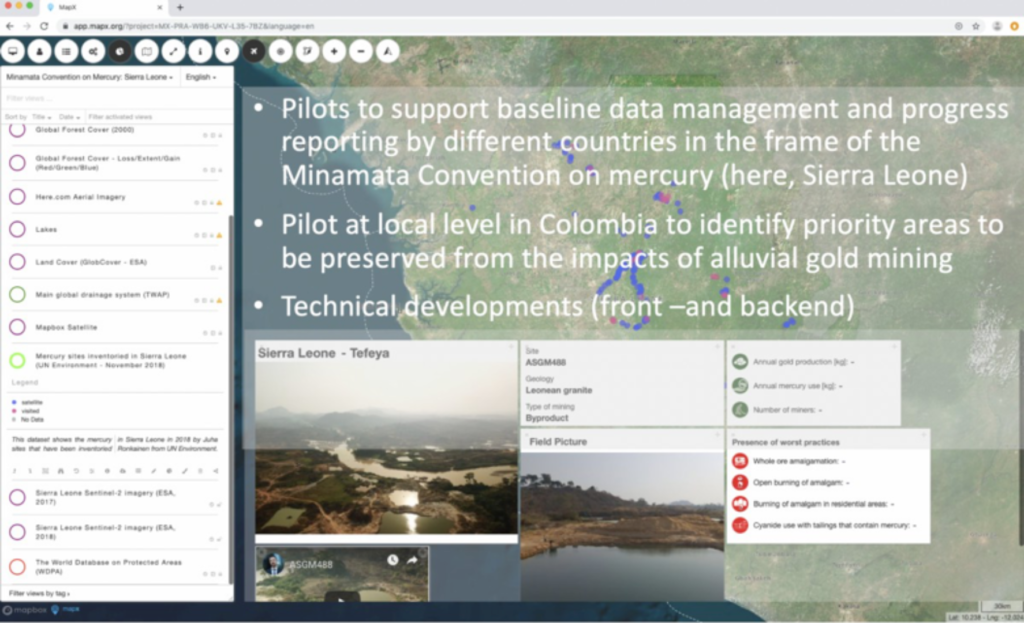
- Finally, Goal 15 on Life on Land is for instance addressed with a Global Assessment of Land Degradation with a connection with Essential Biodiversity and Ecosystem Variables.
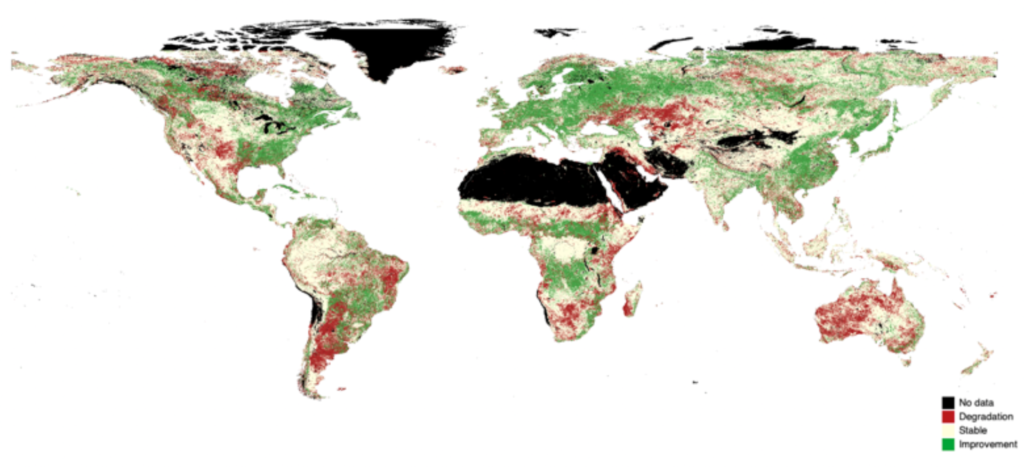
Next steps
- Finalize all workflows
- Demonstrate the use of the Knowledge Base connected to the VLab and to the Dashboard for the GEO Week and ministerial in November
- Start the GEO community activity
- Reinforce collaborations with other Strands through Knowledge Base, VLab and Dashboard
- Workshop on lining Knowledge Base, VLab and Dashboard in Spring 2020
- Special issues on Data Cubes, VLab workflows and ERA-Planet Science Policy interface
Conclusions
The technical solution offered by our CNR partner to build workflows on VLab are definitely adapted to the need not only of GEOEssential project, but also to the other ERA-Planet projects, and almost ready to be implemented at any scale. The final year of the project will allow to improve the VLab platform with its Knowledge Base, to link it to the project Dashboard, and to build more relevant workflows to address policy needs at various scales.

Selected references (from www.geoessential.eu/publications)
Ambrosone, M., Giuliani, G., Chatenoux, B., Rodila, D., and P. Lacroix. 2019. “Definition of candidate Essential Variables for the monitoring of mineral resources exploitation”. Geo-spatial Information Science, 22: 265-278.
Dantas de Paula, M., M. Gomez-Gomenez, A. Niamir, and T. Hickler. 2019. “The Potential of European earth observation products for driving and evaluating processed-based ecosystem models.”
Giuliani, G., Piller, T., Chatenoux, B., Moser, F. and P. Lacroix. “Data Cube on Demand (DCOD): Generating Earth Observation Data Cube Anywhere”. Submitted to the International Journal of Applied Earth Observations and Geoinformation.
Koloti, A., A. Shelestov, T. Borisova, O. Turos, G. Milinevsky, I. Gomilko, T. Bulanaya, et al. 2019. “Essential Variables on Air Quality Estimation within ERA-PLANET Project.”
Kyba, C.C.M., 2018. “Is light pollution getting better or worse? ” Nat. Astron. 2: 267-269.
Lacroix, P., Moser, F., Benvenuti, A., Piller, T., Jensen, D., Petersen, I., Planque, M. and N. Ray. (2019). “MapX: an open geospatial platform to manage, analyse and visualise data on natural resources and the environment”. SoftwareX 9: 77-84.
Lavreniuk, M., N. Kussul, A. Kolotii, S. Skakun, O. Rakoid, and L. Shumilo. 2019. “A workflow for Sustainable Development Goals Indicators Assessment Based on High Resolution Satellite Data ”
Lehmann, A., J. Masò, S. Nativi, and G. Giuliani. 2019a. “Towards Integrated Essential Variables for Environmental Sustainability.”
Lehmann, A., S. Nativi, P. Mazzetti, J. Maso, I. Serral, D. Spengler, A. Niamir, et al. 2019b. “GEOEssential – Mainstreaming Workflows from Data Sources to Environment Policy Indicators with Essential Variables.”
Masò, J., I. Serral, C. Domingo-Marimon, and A. Zabala Torres. 2019. “Earth Observations Observatory for policy monitoring based on a comprehensive definition of Essential Variables.”
McCallum, I., S. Fritz, N. Kussul, A. Lehmann, J. Maso, C. Montzka, I. Serral, and D. Spengler. 2019. “Addressing the food water energy nexus with Earth observation ” Miranda Espinosa, M.T., G. Giuliani, and N. Ray. 2019. “Essential Climate Variables: Reviewing the accessibility to data and information product.”
Nativi, S., M. Santoro, G. Giuliani, and P. Mazzetti. 2019. “Towards a Knowledge Base to support Global Change Policy Goals.”
Plag, H.P, and S. Jules-Plag. 2019. “A Goal-Based Approach to the Identification of Essential Transformation Variables in Support of the Implementation of the 2030 Agenda for Sustainable Development.”
Ranchin, T., M. Trolliet, L. Ménard, and L. Wald. 2019. “Which variables are essential for renewable energies?”
